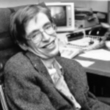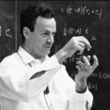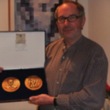Einstein's Dice and Schrödinger's Cat: How Two Great Minds Battled Quantum Randomness to Create a Unified Theory of Physics
(Libby/OverDrive eBook, Kindle)
Available Platforms
Description
More Details
Similar Titles From NoveList
Similar Authors From NoveList
Published Reviews
Choice Review
Often it seems that people outside science do not realize what a messy undertaking science can be. Scientists are human beings like everyone else and are affected by political, psychological, and sociological pressures. Theorists are not simply isolated individuals ciphering at a chalkboard. In this book, Halpern (physics, Univ. of the Sciences in Philadelphia), author of Edge of the Universe (CH, May'13, 50-4974), explores the evolving personal and professional relationship between Einstein and Schrödinger. He does an excellent job of tracing how their shared worldview affected their approach to quantum mechanics and their mutual desire to challenge the Copenhagen interpretation. Many readers will be surprised by the discussions of the failures of these two great scientists in trying to find a unified theory and how it eventually led to their estrangement. That Einstein had openly proposed a unified theory that got much public attention only to have it demonstrated to be incorrect and that Schrödinger--to even more fanfare years later--did the same makes for an intriguing tale. More important to Halpern's study is that these incidents arguably led to the personal rift between these friends. Assuming no science background from his audience, Halpern explains the necessary background physics to follow the evolution of the ideas. Summing Up: Highly recommended. All readership levels. --Eric Kincanon, Gonzaga University
Booklist Review
A singular genius, Einstein recognized in Erwin Schrödinger a kindred spirit, writing to the Austrian scientist in 1946, You are my nearest brother, and your brain runs so similar to mine. Armchair physicists may know how Einstein raged against a quantum universe governed by a dice-throwing deity. They may even know how the German titan vainly strove to render that universe irrelevant by formulating a new relativity fusing all fundamental forces. What Halpern plucks from obscurity is the revealing backstory of how Einstein claimed an improbable intellectual sibling in his quixotic fight against quantum randomness. Famous for challenging his colleagues with a thought experiment focused on a cat simultaneously alive and dead, Schrödinger emerges in this narrative of brotherhood as a brilliant intellect but a mercurial personality. Indeed, only emotional volatility can account for the way the younger scientist unintentionally forfeits his brotherhood with Einstein through foolish boasts about his own superior achievement in authoring a supposed master theory of the universe. A tale of cosmic ambitions in earthbound men.--Christensen, Bryce Copyright 2015 Booklist
Publisher's Weekly Review
Halpern (Edge of the Universe) attempts his own grand unification in this look at the lives, work, and friendship of two giants of physics. He details the romances, careers, and politics of contemporaries Albert Einstein and Erwin Schrödinger from their earliest childhood brushes with science to their deaths, updating what is known of Einstein's life thanks to a recently released trove of early letters. Both Einstein and Schrödinger staunchly believed that randomness had no place in a theory that described the universe and spent much of their later years futilely crafting explanations that failed to fully explain reality. Halpern, himself a physics professor, is challenged by the task of summarizing and explaining the work of his two principal subjects, as well as that of every other serious physicist of the 20th century. Quantum physics, even in précis form, is a level beyond rocket science, and the author does his best, even giving a taste of current progress in the field. Like this pair of geniuses, Halpern has his own difficulties with quantum theory, but as he notes of Einstein and Schrödinger, "even the most brilliant scientists are human." Agent: Giles Anderson, Anderson Literary Agency. (Apr.) © Copyright PWxyz, LLC. All rights reserved.
Library Journal Review
Halpern (physics, Univ. of the Sciences, Philadelphia; Collider; Brave New Universe) describes a clash between Einstein and fellow Nobel Prize-winning physicist Erwin Schrödinger. The two men, who previously corresponded and were supportive of each other's work, differed when it came to their ideas for a theory unifying gravity and electromagnetism. The ensuing media firestorm is related by Halpern and intertwined with events from the men's lives and events in the wider world. (LJ 2/15/15) © Copyright 2015. Library Journals LLC, a wholly owned subsidiary of Media Source, Inc. No redistribution permitted.
Kirkus Book Review
The history of a grand theorythe theory of everything, aka the unified field theorythat never achieved flight and the two household names that kicked the fledgling theory from the nest before its time.This is a solid story of how scientific progress is achieved, or not, incorporating the mindsets Albert Einstein and Erwin Schrdinger brought to the creation and elaboration of their various theories in physics. With verve, Halpern (Physics/Univ. of the Sciences in Philadelphia; Edge of the Universe: A Voyage to the Cosmic Horizon and Beyond, 2012, etc.) explores the fragile nature of scientific collaborationespecially when two substantial egos are involved, compounded by one of them being subject to spells of braggadocio and overreachingand throws light upon the sometimes-murky worlds of determinism and probabilism. The author is generally clear when dealing with the unified theory and the quest to bring together the fundamental forces of nature, but physics in general is a gnarly topic to make clean and simple for the outsider: "Therefore, the cat would be in a zombielike quantum superposition of deceased and living," is difficult enough to grasp, let alone "the square root of the negative of the determinant of the Ricci tensor." But give Halpern serious credit for melding the wealth of math and physics that influenced both Einstein and Schrdinger's work into a coherent wholesymmetry rules, cosmological constants, non-Euclidean geometry. In addition, the author imbues the story with issues that touched the personal lives of both men. Einstein's life feels familiar and true; Schrdinger emerges as someone scarred by envy and not a little opportunistice.g., when he composed a "statement of support for the Anschluss." Halpern ably explores the clashing personalities and worldviews that had physics in churning ferment during the early part of the 20th century. Copyright Kirkus Reviews, used with permission.
Booklist Reviews
A singular genius, Einstein recognized in Erwin Schrödinger a kindred spirit, writing to the Austrian scientist in 1946, "You are my nearest brother, and your brain runs so similar to mine." Armchair physicists may know how Einstein raged against a quantum universe governed by a dice-throwing deity. They may even know how the German titan vainly strove to render that universe irrelevant by formulating a new relativity fusing all fundamental forces. What Halpern plucks from obscurity is the revealing backstory of how Einstein claimed an improbable intellectual sibling in his quixotic fight against quantum randomness. Famous for challenging his colleagues with a thought experiment focused on a cat simultaneously alive and dead, Schrödinger emerges in this narrative of brotherhood as a brilliant intellect but a mercurial personality. Indeed, only emotional volatility can account for the way the younger scientist unintentionally forfeits his brotherhood with Einstein through foolish boasts about his own superior achievement in authoring a supposed master theory of the universe. A tale of cosmic ambitions in earthbound men. Copyright 2014 Booklist Reviews.
Library Journal Reviews
Halpern (physics, Univ. of the Sciences, Philadelphia; Collider; Brave New Universe) describes the relationship between two Nobel-winning physicists. Albert Einstein, who was the elder of the two men, was a mentor to and correspondent with Erwin Schrödinger, and each was supportive of the other's work until their competing ideas on a theory unifying gravity and electromagnetism collided. The clash was exacerbated in large part by a media frenzy to which both contributed and from which both suffered, though they later able made some amends. Rapid changes in physics and in world politics in the 20th century, and events in the men's personal lives are woven elegantly into the narration that is accentuated by poetic section titles such as "Gift from the Devil's Grandmother." A unifying theory is still elusive, leaving one to wonder if, had things gone differently, these two would have validated such a theory and we would know more about our universe. VERDICT A highly approachable book that will appeal to readers high school and up, who are interested in physics, the history of science, and the human and political aspects of scientists and their work.—Sara R. Tompson, Jet Propulsion Laboratory Lib., Archives & Records Section, Pasadena, CA
[Page 125]. (c) Copyright 2014. Library Journals LLC, a wholly owned subsidiary of Media Source, Inc. No redistribution permitted.Library Journal Reviews
Halpern (physics, Univ. of the Sciences, Philadelphia; Collider; Brave New Universe) describes a clash between Einstein and fellow Nobel Prize-winning physicist Erwin Schrödinger. The two men, who previously corresponded and were supportive of each other's work, differed when it came to their ideas for a theory unifying gravity and electromagnetism. The ensuing media firestorm is related by Halpern and intertwined with events from the men's lives and events in the wider world. (LJ 2/15/15)
[Page 135]. (c) Copyright 2015 Library Journals LLC, a wholly owned subsidiary of Media Source, Inc. No redistribution permitted.Publishers Weekly Reviews
Halpern (Edge of the Universe) attempts his own grand unification in this look at the lives, work, and friendship of two giants of physics. He details the romances, careers, and politics of contemporaries Albert Einstein and Erwin Schrödinger from their earliest childhood brushes with science to their deaths, updating what is known of Einstein's life thanks to a recently released trove of early letters. Both Einstein and Schrödinger staunchly believed that randomness had no place in a theory that described the universe and spent much of their later years futilely crafting explanations that failed to fully explain reality. Halpern, himself a physics professor, is challenged by the task of summarizing and explaining the work of his two principal subjects, as well as that of every other serious physicist of the 20th century. Quantum physics, even in précis form, is a level beyond rocket science, and the author does his best, even giving a taste of current progress in the field. Like this pair of geniuses, Halpern has his own difficulties with quantum theory, but as he notes of Einstein and Schrödinger, "even the most brilliant scientists are human." Agent: Giles Anderson, Anderson Literary Agency. (Apr.)
[Page ]. Copyright 2014 PWxyz LLCReviews from GoodReads
Citations
Halpern, P. (2015). Einstein's Dice and Schrödinger's Cat: How Two Great Minds Battled Quantum Randomness to Create a Unified Theory of Physics . Basic Books.
Chicago / Turabian - Author Date Citation, 17th Edition (style guide)Halpern, Paul. 2015. Einstein's Dice and Schrödinger's Cat: How Two Great Minds Battled Quantum Randomness to Create a Unified Theory of Physics. Basic Books.
Chicago / Turabian - Humanities (Notes and Bibliography) Citation, 17th Edition (style guide)Halpern, Paul. Einstein's Dice and Schrödinger's Cat: How Two Great Minds Battled Quantum Randomness to Create a Unified Theory of Physics Basic Books, 2015.
Harvard Citation (style guide)Halpern, P. (2015). Einstein's dice and schrödinger's cat: how two great minds battled quantum randomness to create a unified theory of physics. Basic Books.
MLA Citation, 9th Edition (style guide)Halpern, Paul. Einstein's Dice and Schrödinger's Cat: How Two Great Minds Battled Quantum Randomness to Create a Unified Theory of Physics Basic Books, 2015.
Copy Details
| Collection | Owned | Available | Number of Holds |
|---|---|---|---|
| Libby | 2 | 2 | 0 |



































